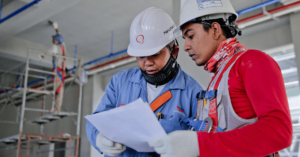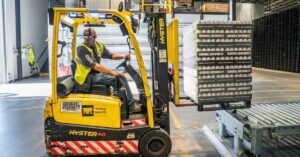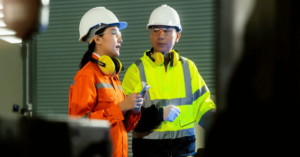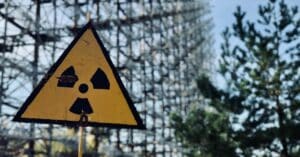Construction workers, electricians, and site inspectors are just some of the roles that might need to work in a confined space.
Key Points:
- People working in drains, sewers, pits, and tanks will all be working in a confined space that can be very dangerous.
- Even if a confined space is not entirely contained, like in a vat, there can still be a high element of danger for people working inside.
- Working in any confined or small space can be hazardous if the right precautions aren’t taken.
What are the risks involved?
There are numerous risks involved when it comes to working in confined spaces, including:
- A lack of oxygen. This can be caused by reactions between natural elements such as soil and the oxygen in the atmosphere. It can also be caused by rust forming inside steel tanks.
- Flooding – by water or a more solid substance like soil or grain, depending on where you’re working. Flooding can happen very quickly, and blocks access routes so you should always be aware of anything that could go wrong.
- Fire – flammable materials or vapours can catch fire easily, putting lives at risk in a confined space. Excess oxygen can also cause a fire so it’s wise not to pump more oxygen into a confined space, without checking the levels first.
- Fumes – poisonous fumes and vapours can build up in sewers, or leak into a small space from contaminated land.
- Dust – breathing in too much dust can lead to respiratory difficulties and can also increase the risk of fire. That includes things like flour dust too.
- Overheating – confined spaces can heat up quickly, and an increase in body temperature can be dangerous, especially if you’re carrying out manual work.
What injuries or mental disorders can it cause?
Being in a confined space without a proper safety plan in place can potentially be fatal.
Continually working in a small space with dust can cause respiratory problems and being in the same position for long periods of time may lead to musculoskeletal issues. Those who are working in hot conditions may also be susceptible to exhaustion.
Those who suffer with claustrophobia should not be told to work in a confined space.
What are an employee’s responsibilities?
The Confined Spaces Regulations 1997 outline three key steps you should take before you carry out any work in a small space:
- Avoid it unless it’s absolutely necessary. You should see if you’re able to do the work from outside using remote tools first.
- If you need to enter a confined space, follow a safe system. Everyone you’re working with should be adequately trained and they should understand what their role will be. Test the air before you enter. Make sure everyone has the right equipment and they’re able to get in and out, even with emergency gear on. Think about how you’ll ensure the right ventilation is in place too.
- Make sure you have emergency procedures in place. How will you communicate that there is an emergency? Do you have the right resuscitation equipment on hand?
You should never enter a confined space to rescue someone else unless you’re fully trained to do so – you could put yourself at risk. Wait for the emergency services or trained rescuers to arrive instead.
What can companies do to help, support and prevent accidents?
Employers have an obligation to make sure everyone who needs to work in a confined space is fully trained and able to use any equipment they’ll need to take with them. Sending someone into a confined space without the right training is not only irresponsible but highly dangerous too.
Before any work is carried out, a risk assessment should be completed. Think about how long your employees will need to be in the confined space, and what you can do to reduce the risk of harm to them as much as possible.
The correct supervision to support them throughout should also be in place.








